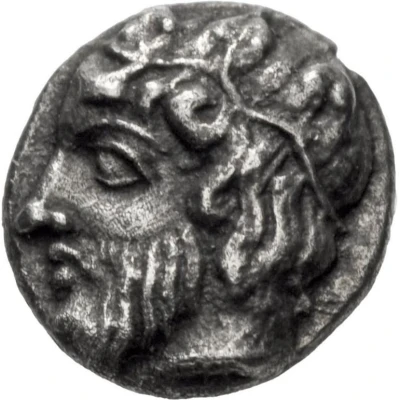


© CGB
Dichalkon 150 BC - 100 BC
| Copper | 2.72 g | 17 mm |
| Issuer | Myrhina (Aeolis) |
|---|---|
| Type | Standard circulation coin |
| Years | 150 BC - 100 BC |
| Value | Dichalkon (1⁄24) |
| Currency | Drachm |
| Composition | Copper |
| Weight | 2.72 g |
| Diameter | 17 mm |
| Shape | Round (irregular) |
| Technique | Hammered |
| Orientation | Medal alignment ↑↑ |
| Demonetized | Yes |
| Updated | 2024-10-09 |
| Numista | N#70449 |
|---|---|
| Rarity index | 89% |
Reverse
Inscription divided by an amphora with a kithara on the right
Script: Greek
Lettering: ΜΥ ΡΙ
Edge
Rough
Interesting fact
The Dichalkon coin was used as a form of currency in the ancient Greek city of Myrhina, located in the region of Aeolis. Despite being made of copper, which was a relatively common metal at the time, the Dichalkon coin was still considered valuable and was used for a variety of transactions, including trade and commerce. Its value was determined by its weight, with heavier coins being worth more than lighter ones. The fact that the Dichalkon coin was made of copper and still held value shows how resourceful and innovative the people of Myrhina were in creating a form of currency that was both practical and valuable.



